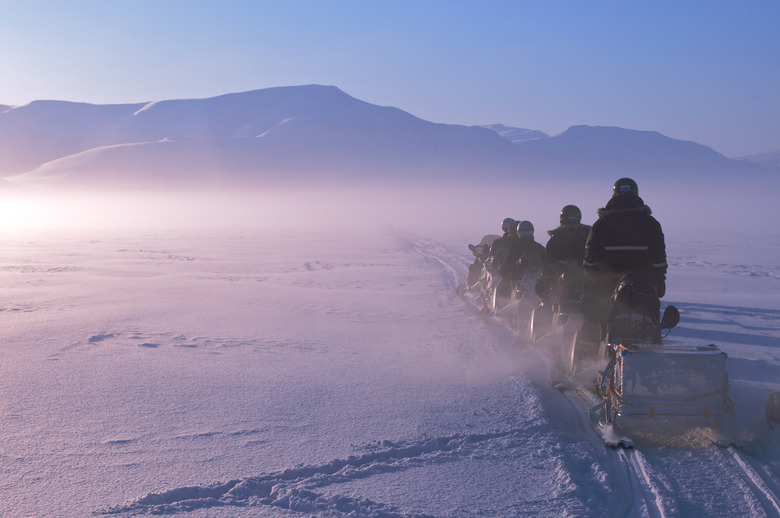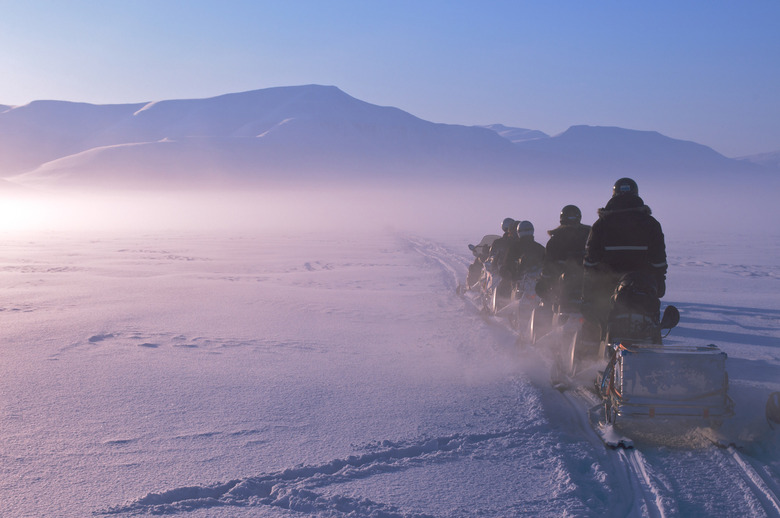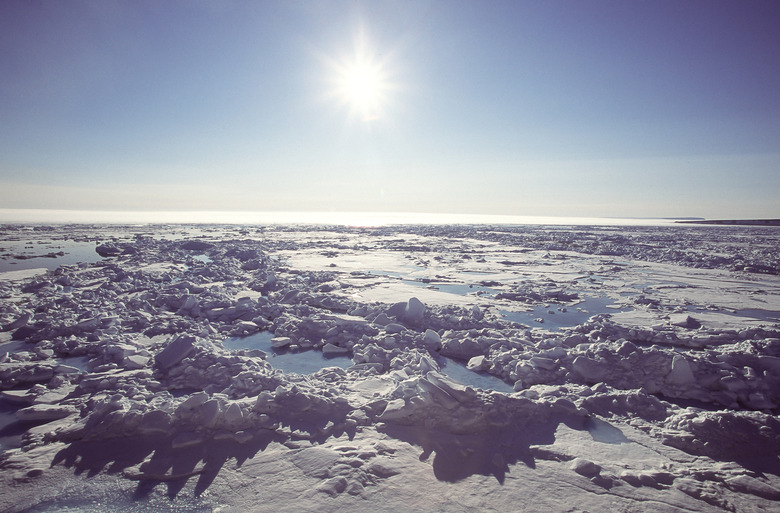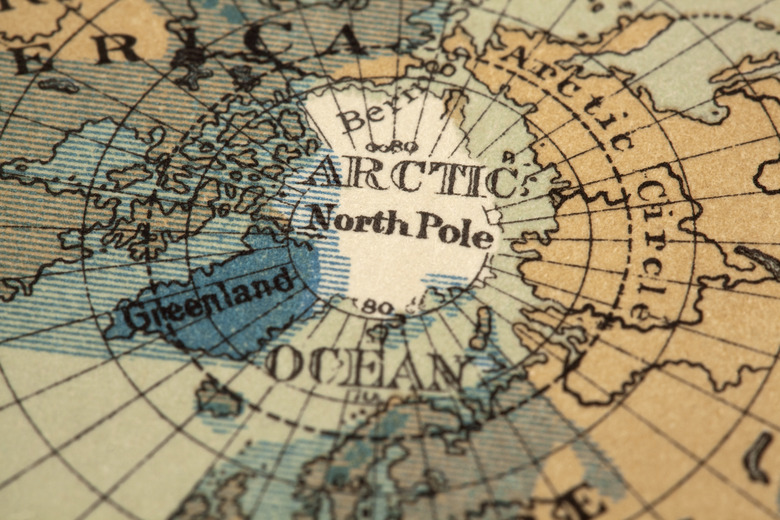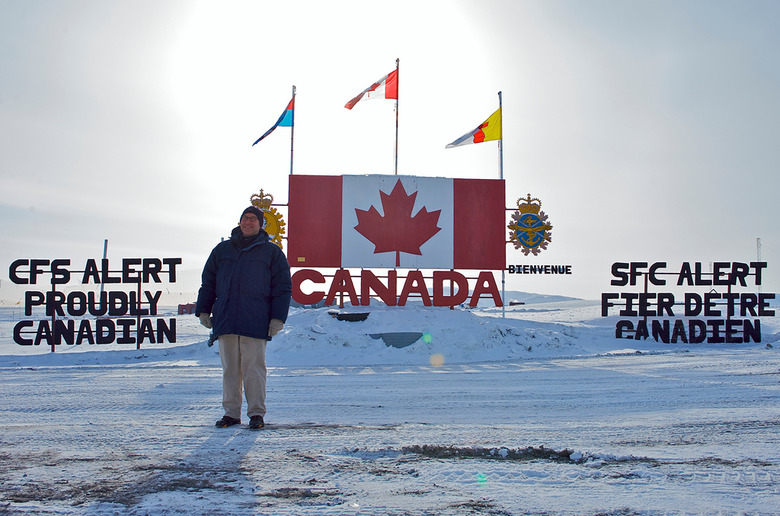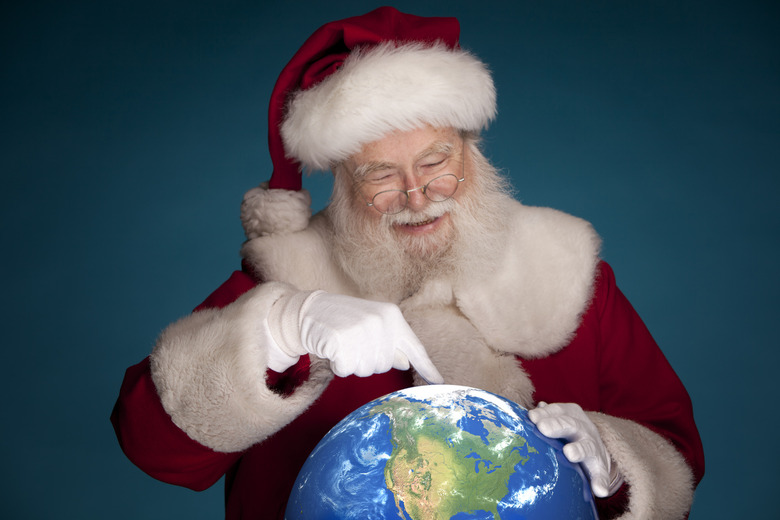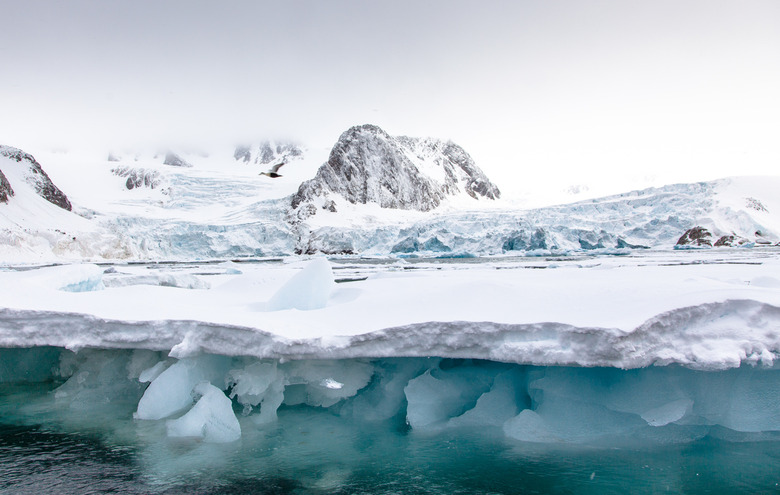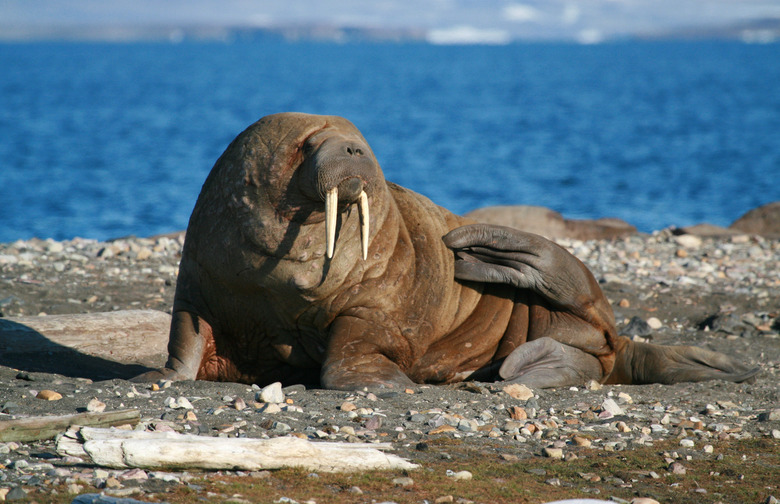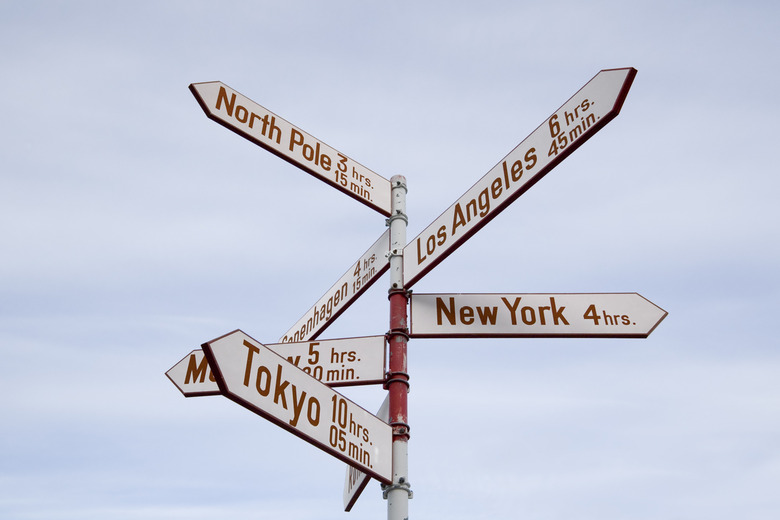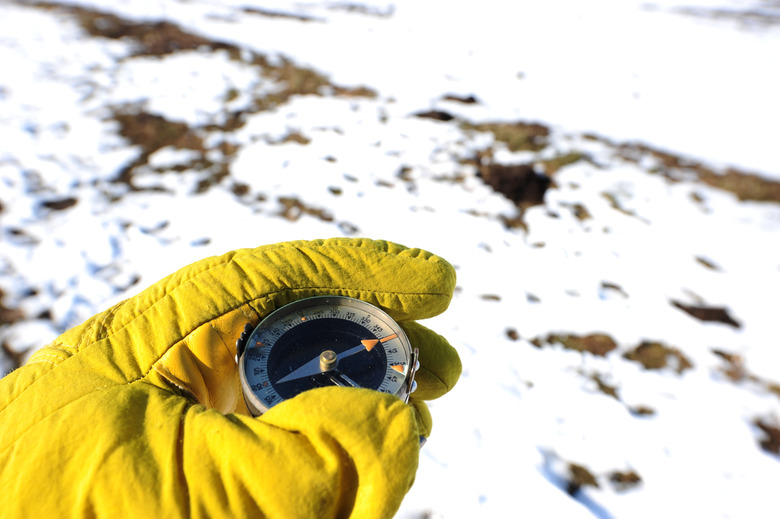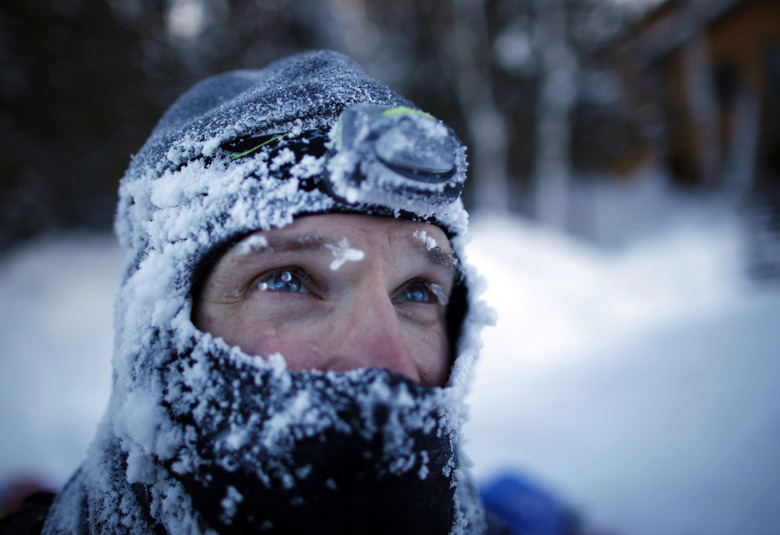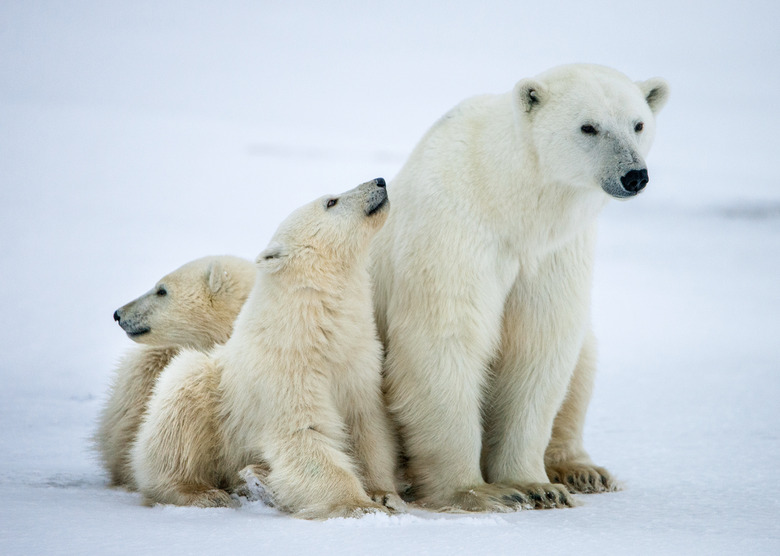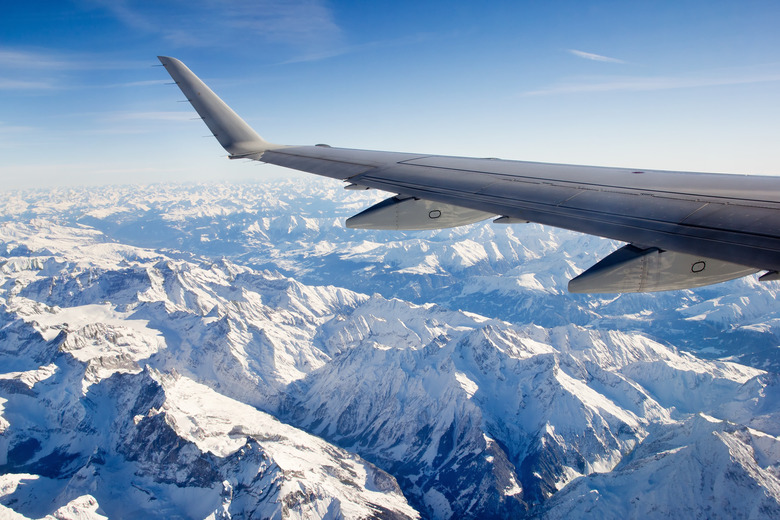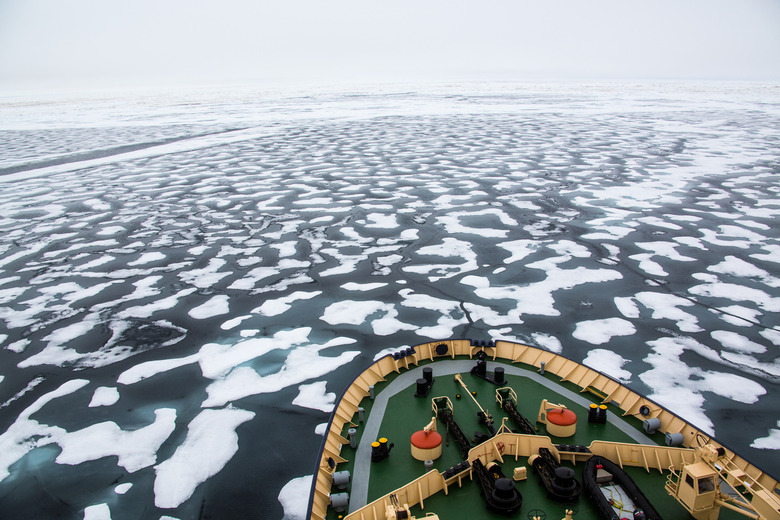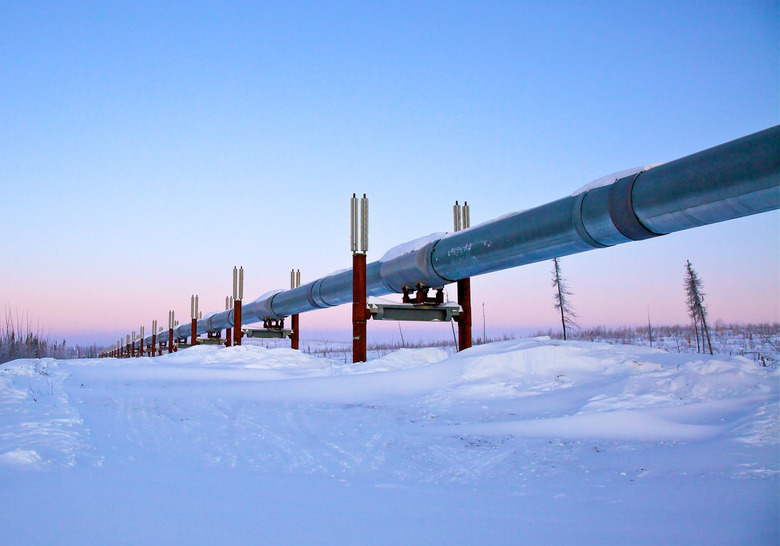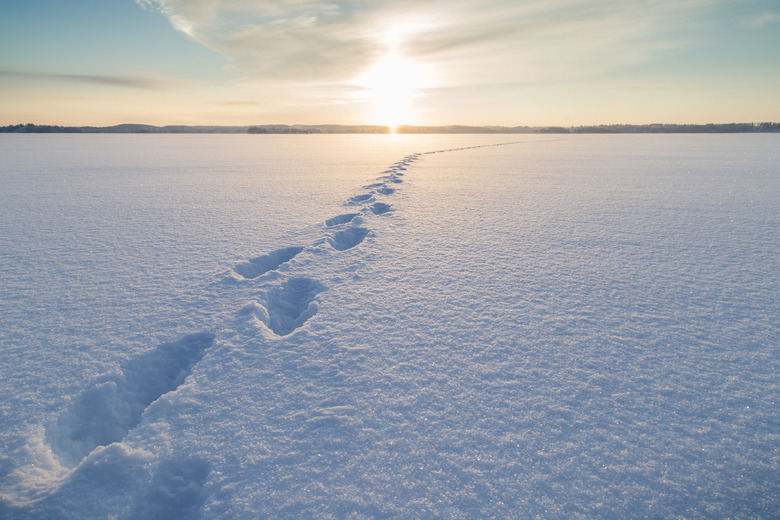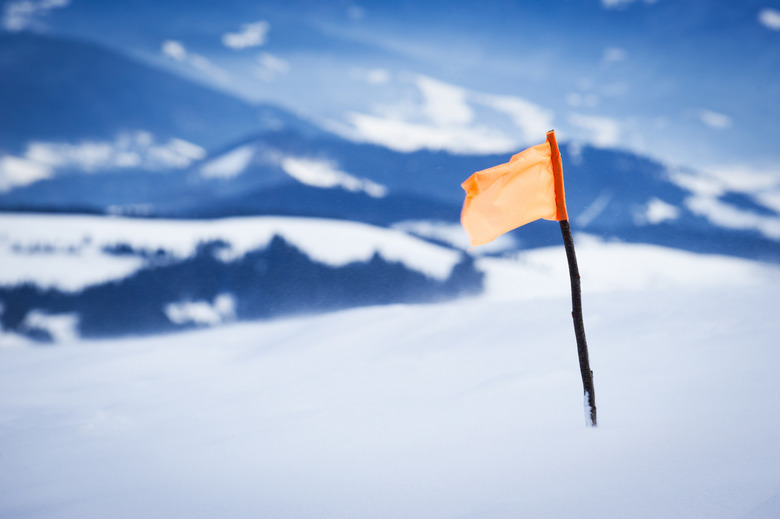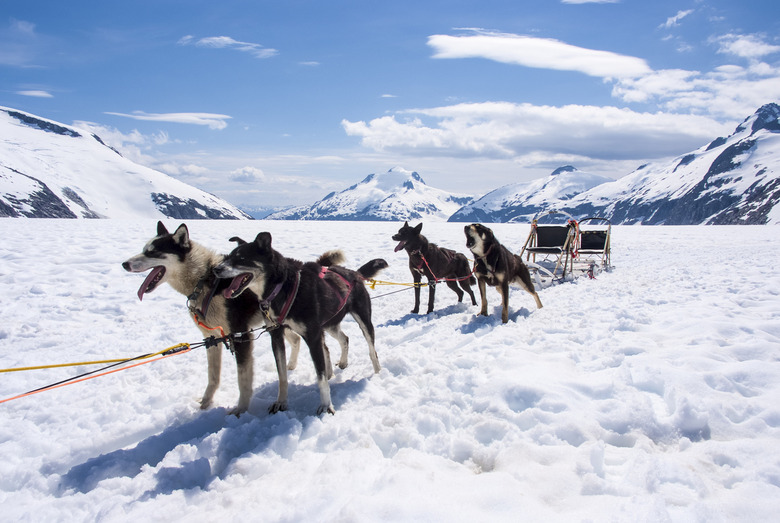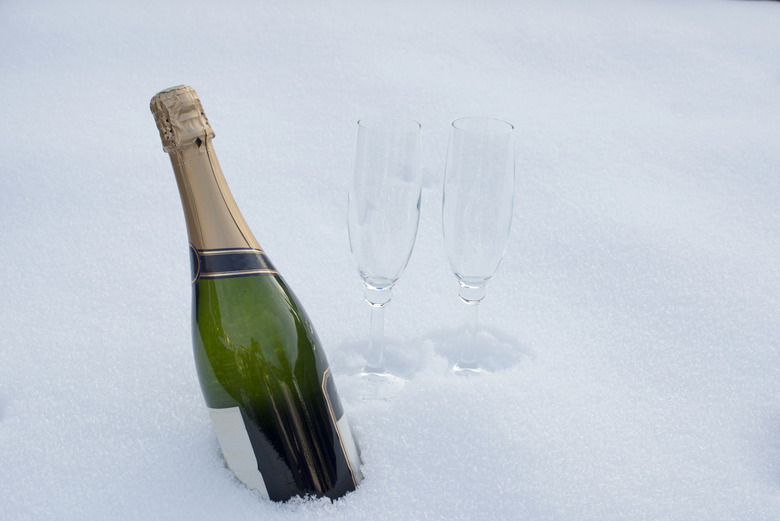19 Things You Never Knew About The North Pole Slideshow
19 Things You Never Knew About the North Pole
The North Pole has captivated scientists and storytellers for generations. Here are some cool facts about this unique place.
1. The sun sets once a year
At the North Pole, the sun rises once a year and sets once a year. The North Pole is completely dark in the winter from October through March, then daylight for 24 hours a day during the summer. The spring and fall are brief times of transitional twilight between these two extremes.
2. A land out of time
There's technically no time at the North Pole. Lines of longitude, which separate time zones, all converge at the North Pole, meaning it's technically in all time zones simultaneously. There's also no way to tell time based on the sky as it's either continuous darkness or continuous sunlight overhead. Explorers and scientists often stick to the time zone of their country of origin or employ Greenwich Mean Time while there.
3. 500 miles from civilization
The closest permanently inhabited town is Alert, Nunavut, Canada on the northern tip of Ellesmere Island. It is the northernmost inhabited community on earth and is just 508 miles from the North Pole.
4. Why Santa lives there is unknown
Santa Claus is an amalgamation of historical figures and folklore characters, but none of them were from the Arctic. The real-life St. Nicholas was from Turkey, while other European traditions have Santa living in their neck of the woods. The first time Santa's workshop was given a location was by American illustrator Thomas Nast, who published a drawing in 1866 that placed Santa at the North Pole. It's believed Nast picked it because Santa was already associated with cold-weather climes, and at the time, the North Pole was more or less a place of fantasy as no man had yet to make it there.
5. Ice, ice baby
Unlike Antarctica, there's no land at the North Pole. It's actually just an ice sheet that's about 10 feet thick. During the winter months, the ice mass actually doubles in size, growing to about the same surface area as the United States before melting down again in the summer.
6. The South Pole is colder
Though they get the same amount of sunlight, the South Pole is colder than the North Pole. The ocean underneath the ices floes up north keep things a balmy 32 degrees in summer and -18 in winter, on average. Antarctica is actually a land mass that sits on much higher elevation on average, meaning it gets much chillier: -18 in the summer and -76 in the winter.
7. There are two different North Poles
The geographic North Pole isn't the same as the magnetic North Pole. The location of the physical northernmost point on the planet has actually changed slightly through the years as earth's axis has a slight wobble. The magnetic North Pole is hundreds of miles south of the terrestrial North Pole. Its current location is Ellesmere Island in Northern Canada.
8. It’s confusing to compasses
Compasses are attuned to magnetic north — but what happens when you're standing at the magnetic North Pole? There are three different possibilities if you hold a compass horizontal at the North Pole. As it can't point down, it might spin before landing in a random position. It could also point the same way as the last time you used it, or it could point to anything magnetic that you might be wearing.
9. You can run a marathon at the North Pole
The North Pole Marathon bills itself as the World's Coolest Marathon, and it just might be. The race course is run on Arctic ice floes, with just six to 12 feet separating runners from the Arctic Ocean. That means the race is technically run on water rather than land. This unique experience attracts hundreds of runners each year from around the world.
10. There’s been an Arctic soccer match
Besides a marathon, the North Pole has seen another sporting event. Arctic researchers have been known to stretch their legs by kicking a soccer ball around, but in 2001, scientists from three icebreaker ships met up and hosted the "Polar Cup." Each ship, the Polarstern from Germany, the Oden from Sweden, and the Healy from the U.S., assembled a team, and they played three 20-minute matches on an ice floe in temperatures as low as -5. One of the German meteorologists was a licensed referee and officiated, making it a proper tournament.
11. Rock ‘n’ roll at the pole
The North Pole has seen lots of crazy stunts, but it hasn't quite seen a rock concert. One of the closest bands to get there, though, is Metallica, who played a concert north of the Arctic Circle in Tuktoyaktuk in the Northwest Territories of Canada in 1995. Metallica guitarist Kirk Hammett said, "It wasn't as cold as it sounded." In 2013, the band topped that feat by playing a show at a research station in Antarctica, becoming the first band to play shows on all seven continents.
12. Polar bears, not penguins
The Arctic is home to plenty of cold-weather wildlife, including polar bears, narwhals, orcas, humpback and beluga whales, arctic foxes and reindeer. But because of the shifting ice at the North Pole, terrestrial critters rarely make their homes there. There are a variety of Arctic birds, including puffins, but you won't find any penguins playing at the North Pole. Penguins are exclusive to the Southern Hemisphere, with two species, Emperors and Adélies, calling Antarctica home.
13. You might’ve flown over the North Pole
Commercial airlines have found that the cheapest and most efficient route from North America to Asia is often a transpolar route, meaning you pass through the Arctic Circle. For example, the flight from New York to Hong Kong is about five hours faster via the North Pole. The route does present some challenges with extreme weather and navigation, but handling them has become routine for many pilots.
14. The North Pole is considered international waters
As it's not technically land, no one owns the North Pole. The water surrounding it is considered international waters, though many countries do stretch into the Arctic Circle, including the U.S., Canada, Russia, Iceland, Denmark, Finland, Norway and Sweden. These countries, along with members of indigenous Arctic peoples, comprise an Arctic Council to discuss matters concerning the region.
15. Piece of the pie
Arctic Council countries each have an interest in being able to claim the North Pole. The Arctic is a potentially valuable trade route between Europe, North America and Asia. But even more appealing is that 20 percent of the planet's undiscovered and recoverable oil and natural gas deposits are reportedly in the Arctic. That is why countries like Russia are currently exploring how to carve out their claim on bigger and bigger slices of the region.
16. Who was first?
The first expedition to reach the North Pole was undertaken in 1827, but it wasn't until 1908 that the first group claimed to have actually reached it. A different expedition led by Robert Peary in 1909 also claimed to have reached the pole, though both claims are controversial because their records are not considered decisive proof. Roald Amundsen reached the pole by plane in 1926. The first verified expedition to step foot on the North Pole was a group of Soviet researchers who were flown in and deplaned in 1948. It wasn't until 20 years later that a team managed to reach the pole by land using dogsleds.
17. Maybe it happened earlier after all
American explorer Robert Peary's claim to have reached the pole in 1909 has been in dispute for decades. Skeptics doubted he could've made it as fast as he did on the route he said to have taken, though his sponsor, the National Geographic Society defended his claim. It wasn't until 2005, though, that Peary's claim seemed to be validated. British explorer Tom Avery mimicked Peary's route and successfully made it to the pole.
18. Open to one-upmanship
After the North Pole was successfully reached by an expedition, men from around the world have had to up their games to stake their Arctic claim. In 1986, Will Steger staged the first confirmed dogsled journey to the North Pole without re-supply. The next year, Shinji Kazama became the first man to reach the North Pole by motorcycle. Kazama went on to be the first man to ride his bike to the South Pole and then set a record for the highest altitude reached by motorcycle on Mt. Everest.
19. All-star stunt
Even world-famous adventurers have been drawn to the North Pole. In 1985, Sir Edmund Hillary, the first man to reach the summit of Mt. Everest, and American astronaut Neil Armstrong, the first man on the moon, traveled together to the North Pole. The iconic explorers, along with the first person to fly a balloon around the world and the first person to climb the highest peaks of all seven continents, flew in on a small twin-engined plane. Upon their arrival, they popped a bottle of champagne to celebrate, but it froze before they even poured the second glass.
